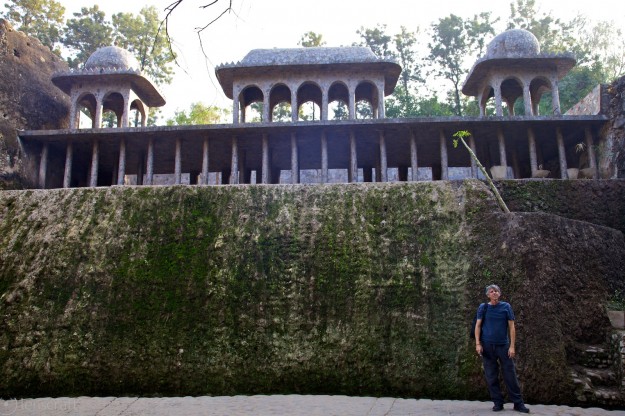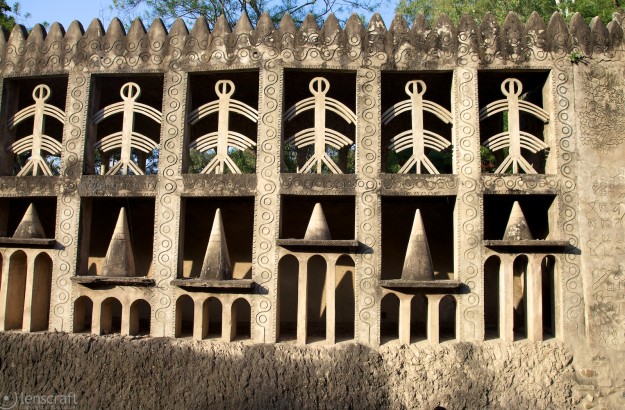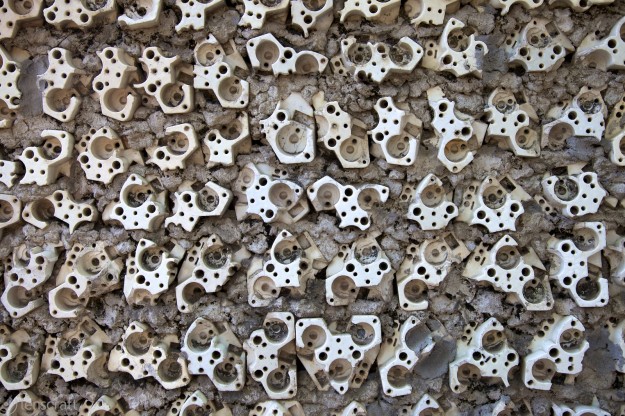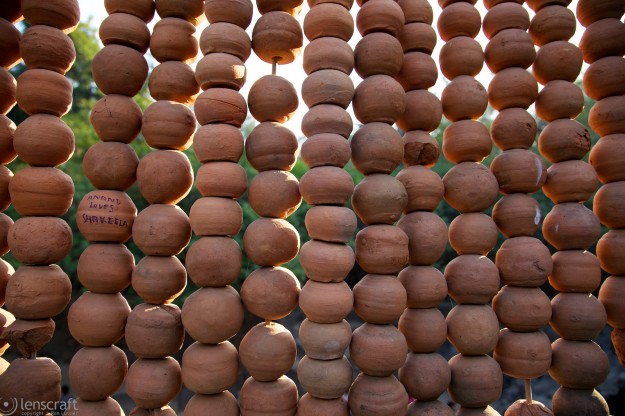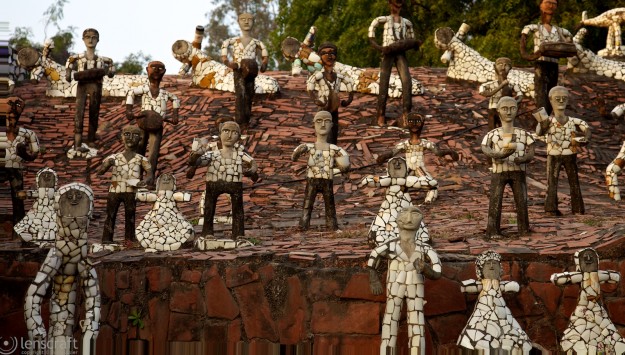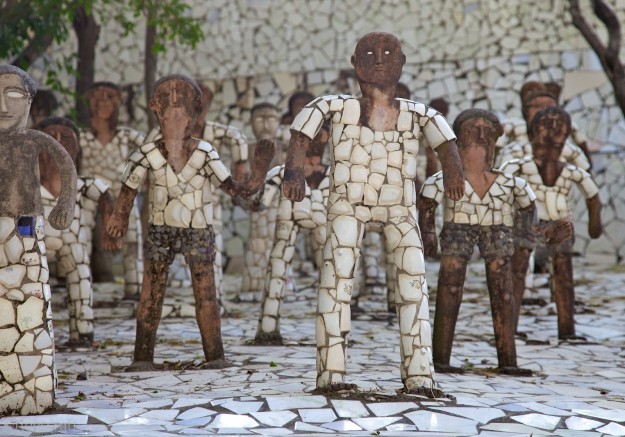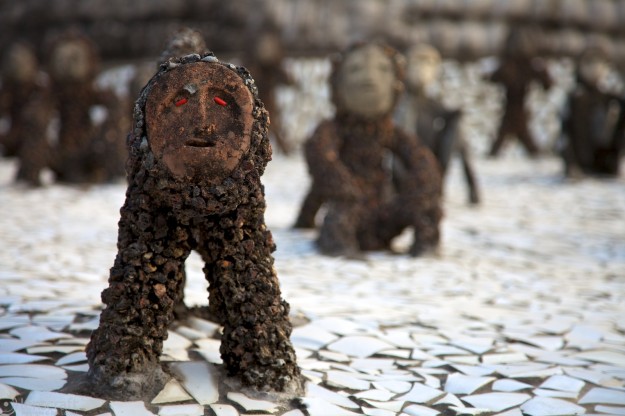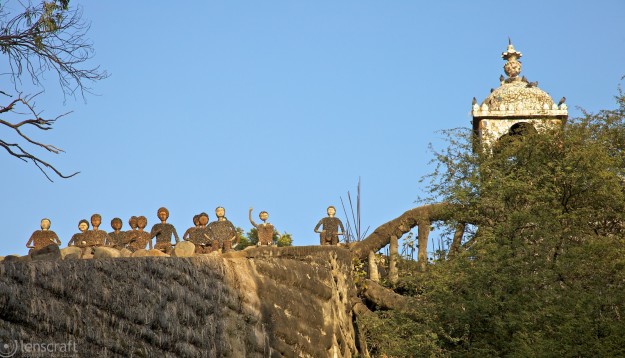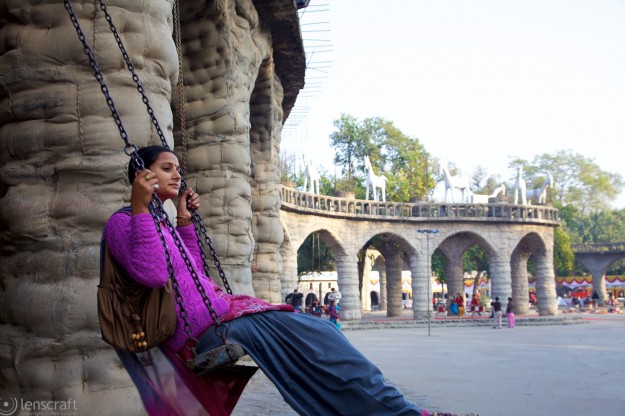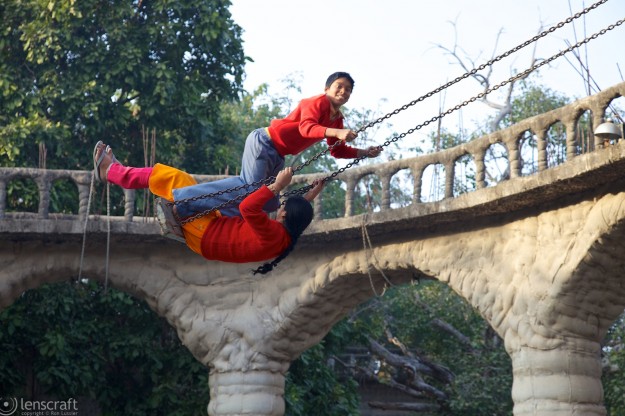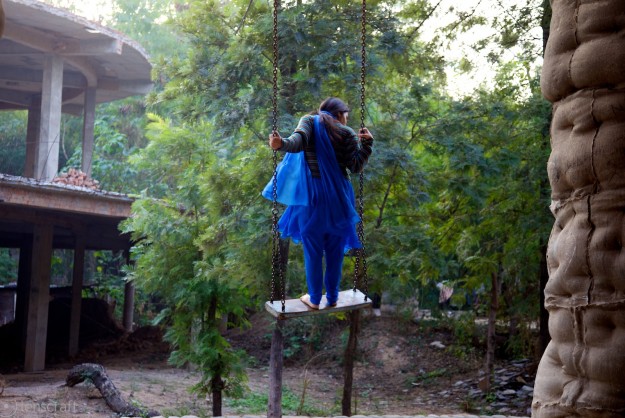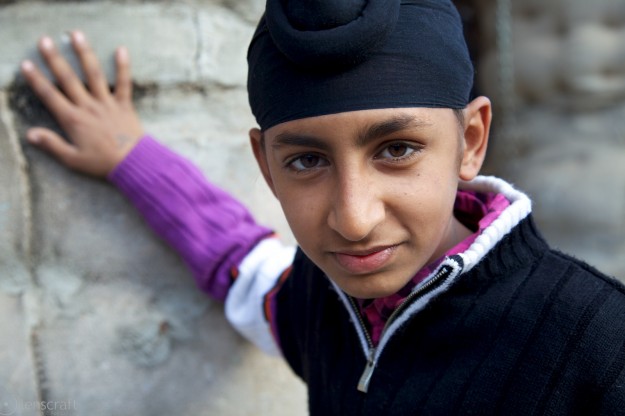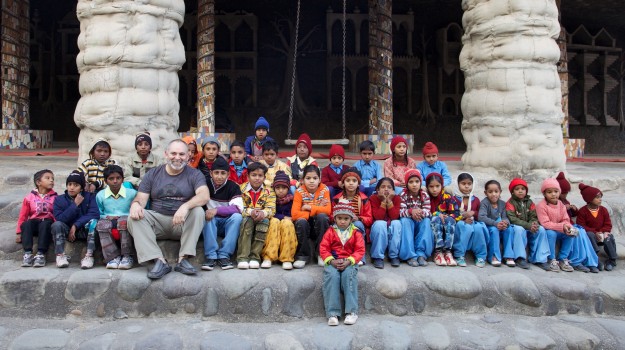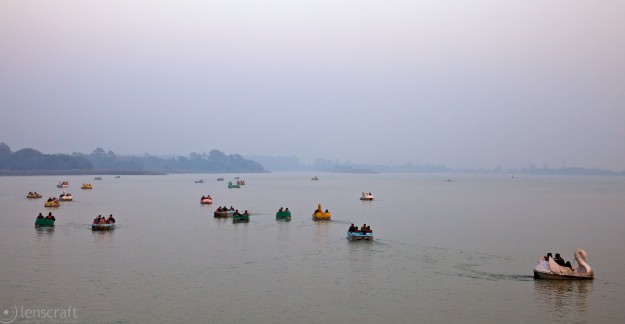The Partition. That’s the name it’s always given. It’s India’s equivalent of the Civil War, when (against Ghandi’s objection) India split off the Muslim states of Pakistan and East Pakistan (now Bangladesh.)
After the Partition, India was recovering from the trauma while at the same time reveling in its long-sought independence. One of the decisions the new country made was to create the shining modern capital of Chandigarh for the state of Punjab. A modernist european architect, Le Corbusier, was brought in to design the city, and he laid out a rigid grid of neighborhoods separated by broad thoroughfares which crossed at roundabouts. Each if these neighborhoods is numbered and sub-divided into lettered sections. This gives the city a decidedly science-fiction vibe. Our hotel for the night is in Sector 22-B. Every time I see a city map, I want to visit Sector 9 to visit the alien slum.
Chandigarh is a stop on the route north to Shimla, and there is only one reason we’re stopping here… Nek Chand.
Nek Chand was a small man who fled Pakistan during the Partition. He settled built a camp in the jungle outside of Chandigarh and got a job as a road inspector. He was appalled by the waste as villages were bulldozed to build the city. He hauled load after load of debris back to his camp. There he would use this material and the local stone to sculpt thousands of figures, some abstract, some humorous, and set them into scenes in the local landscape of stream-cut canyons.
Fifteen years later, a government survey crew stumbled onto Nek Chand’s private city, which by then consisted of amphitheaters, fantasy palaces, and tens of thousands of sculptures made of broken pottery, electrical sockets, and weather-worn stone.
The site was on government land, and should have been destroyed, but the local administrator was a forward-thinking individual. Instead of clearing away what Nek Chand had built, the city gave him a salary and a crew of 50 laborers to continue his work.
At the entrance to the garden, we purchase our tickets through a tiny hole in a wall located about 3′ off the ground. Dan bends over 90 degrees, looks through a 1′ diameter ticket window, and is face-to-face with the ticket seller. It’s the first taste to the weird world we’re about to enter.
We step through a gate and enter a series of sinuous pathways leading from one courtyard to another. The courtyards contain pools and bridges, shelters and potted plants. Some of the walls are tiled with broken pottery. The organic concrete shapes remind me of Gaudi’s buildings in Barcelona.
The path continues, down steps and through small gates only 4′ high. Around every corner, things get weirder and more wonderful. We emerge from a small door into a canyon. An amphitheater is built into the canyon facing a stage. High up on walls of the canyon is a temple in miniature and unreachable.
An almost hidden trail leads out of the amphitheater (and it takes us some time to find it.) We go up the passage and find ourselves in the same canyon, halfway up the wall, heading back the way we came. A doorway then leads into a completely different area, a garden filled with weird birds. The walls of the garden are made of old ceramic electrical sockets, zillions of them, making a beautiful abstract texture.
It’s like that for an hour, small tunnels and passages leading from one fantastic area into successively more fantastic areas.
We descend some steps and duck through another tiny tunnel and enter the largest canyon yet, with the path meandering up, crossing the stream several times. There are structures and filagree built into the walls of the canyon. Up above a king and his army stand at the crest of a hill by a castle. One of the soldiers waves to us, far below.
There is a small cacophony and a stream of little kids pours through the entrance tunnel, laughing, running, pointing. It’s perfect. They overtake us, wash over us, and their joy is totally understandable. I feel like a little kid too. They sweep past us, around a corner, and disappear.
We round the same corner and enter a huge plaza, a child’s paradise. There is an inflatable slide with bizarre faux Mickey Mouse heads stuck on top like trophies. There is a ‘Hall of Humorous Mirrors’. And best of all, all along one side of the plaza is a row of arches, each 20′ high, and each containing an oversized swing. All of the swings are occupied, many by adults reliving their childhoods, their legs pumping furiously to gain more and more altitude.
Dan and I wander through the plaza, grinning like fools. I notice that we’re being followed. A 12-year-old Sikh boy is shadowing us. He stands about 5′ away from me at all times, just staring. I smile at him and he comes over, his hand extended, his face serious. I shake his hand and grin, and he grins back.
“Mera naam Ron hai”, I say, introducing myself. “Akashdeep” he says. And that is pretty much the end of our ability to communicate. I smile and wave and wander away to photograph a lady on a swing, and Akashdeep follows. When I look his way, he just grins and gives me a thumbs-up.
I continue photographing, and Akashdeep continues following me. Eventually I photograph him.
I start photographing kids, and Akashdeep’s uncle shows up. He’s a school teacher, leading a field trip from Punjab. He gathers together all 30 kids, and when I start to photograph them, he insists that I be in the photo. Akashdeep clears a spot for me to sit by his side and possessively puts his arm around me. I give Akashdeep’s uncle my business card, promising that if he emails me I’ll send photos.
Dan and I reluctantly leave playland, passing through a half-dozen other courtyards. One contains hundreds of monkeys, another a small army of people, all staring towards the walkway. One drinks beer, another serves tea. There are skinny elephants, colorful peacocks, camels and priests. There are dancers and severe-looking figures in robes.
We finally emerge from the garden through yet another tiny door, physically and emotionally exhausted.
Nek Chand was a road inspector by trade, but he created an special place in the world that continues to evolve. (Nek Chand is still alive and supervising his garden, and we could see workers adding details in almost every area.) It’s hard to describe how wonderful this garden is… like the Burningman festival, it’s indescribable. You need to be in the place.
Nek Chand’s fantasy rock garden gives me hope for the human race. As long as people like Nek Chand continue to follow their dreams, especially when their dreams are so far out of the conceivable as to be borderline insane, the world will be a better place. When others recognize the insanity and wonder of their art, the world is even better.
On our way back to the hotel, we stop at a Sukhna Lake, an artificial lake designed by Le Corbusier for the people of Chandigarh. To keep the lake a peaceful place, Le Corbusier forbade the use of motorboats. The lake is filled with geese and families in paddleboats, slowly moving across the surface as the sun sets.
We grab a tuk-tuk (auto-rickshaw) back to our hotel and quickly fall asleep. It’s only our second full day in India. I understand how easily people fall in love with this country.*
— Ron
* But I wish people would stop littering. Trash is everywhere, and people seem to think nothing of throwing an empty bottle or crisp bag on the ground, even if there is a bin a few steps away. I’m trying to see past that, but it seems like such a shame to throw trash onto such a beautiful landscape.
